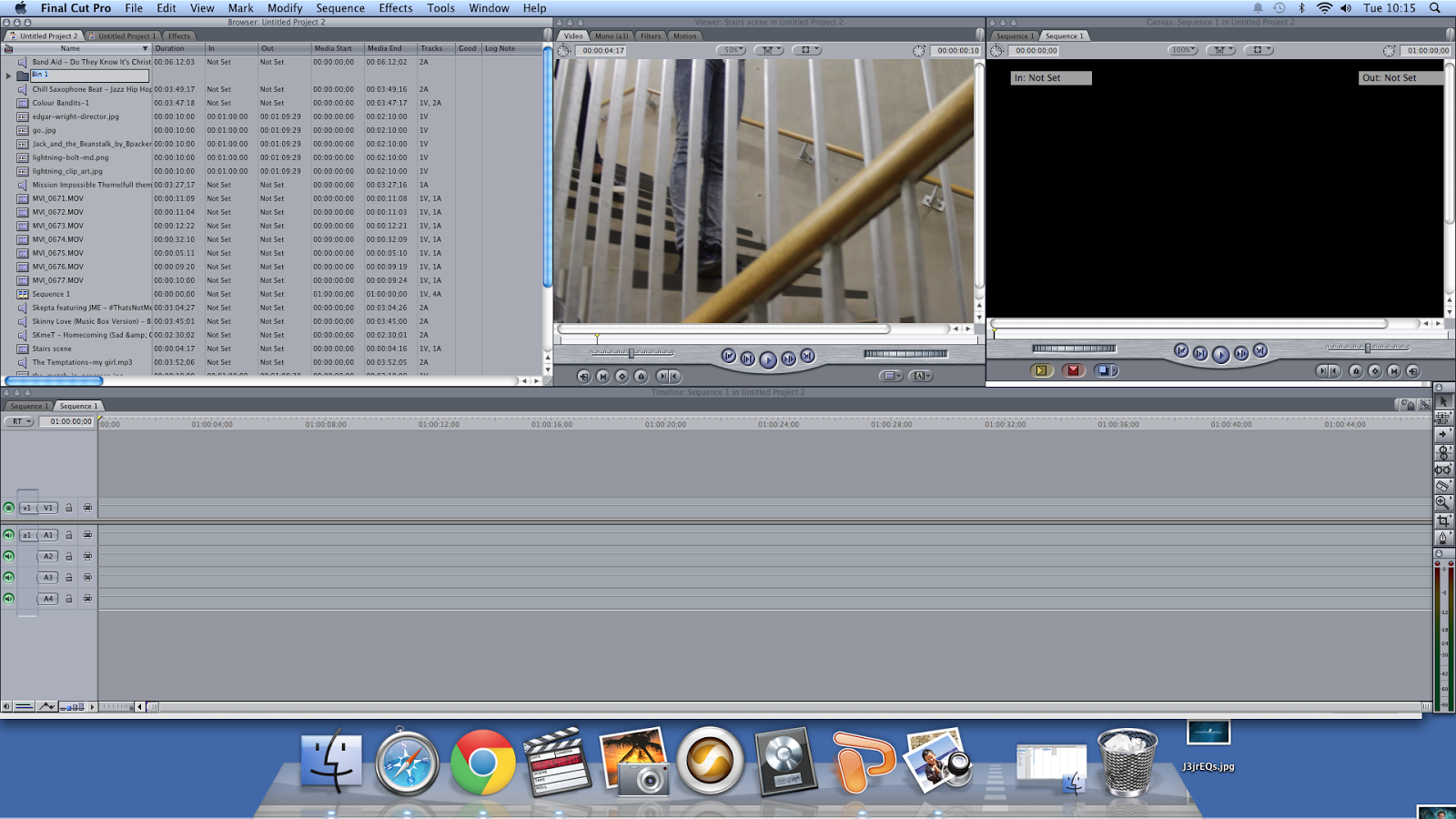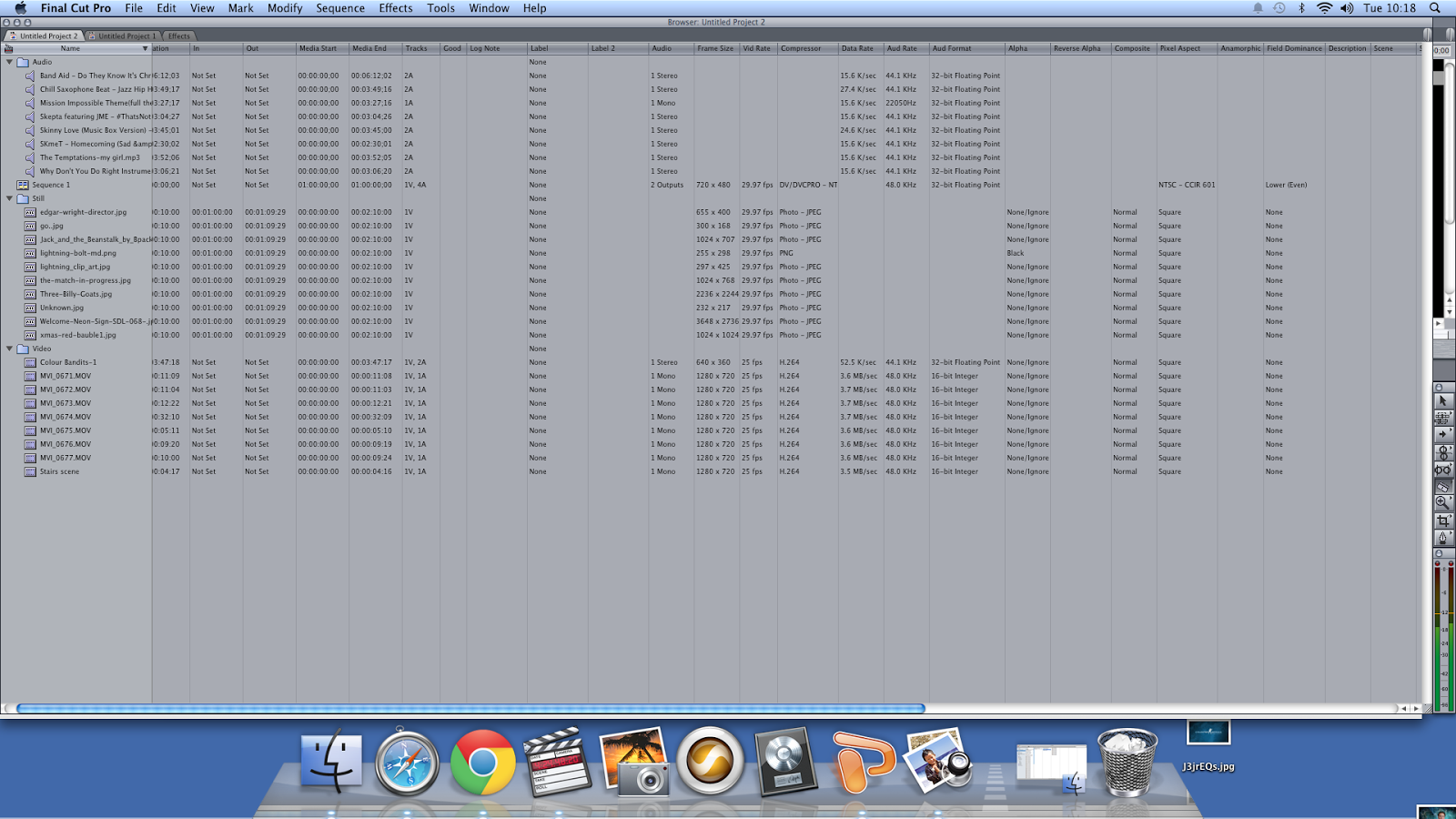The history and development of
editing
By Amari Rae Shepherd Scott
In this essay I shall be discussing the beginning of the
cinema, and how editing has developed over the past century, I will use my
three chosen films to make a comparison between the editing techniques used in
a clip from each film which will further increase evidence of the evolution of
editing. I will be doing this by using an original film and a remake of the
original film. The original film and the remake film I am using is ‘The Karate
Kid’ 1984 and 2010, there is a 26 year gap between when the films were made
which I think is a long enough time gap for there to be significant
improvements in the editing techniques used. I will also be using Edwin S.
Porter’s silent film ‘The Great Train Robbery’ made in 1903; I decided to use
this film, as it was the first film to ever be edited which is why I think it
is a brilliant film to use to help represent the development of editing.
The Great Train
Robbery is a classic Western film with four thieves who steal a train
and rob its passengers of their valuable possessions and then make their grand
escape only to be killed in a shootout by a group sent after them. As I
mentioned previously ‘The Great Train Robbery’ was the first edited movie,
which was a great milestone for the future of the cinema. The only editing
techniques used in The Great Train Robbery are cuts and wide shots; this is due
to the lack of technology in the early 1900s, however by using the cut
technique Porter was able to bridge together the occurrence of a whole day and
compress it into an eleven minute film. All the shots in The Great Train Robbery
are over 30 seconds long as Porter did not know what length to make the shots,
as he didn’t know how the audience would react. No matter how pessimistic
Edison and the Lumiere Brothers were about the future of the cinema –
especially considering how Auguste Lumiere thought “The cinema is an invention
without a future” – as no one would want to pay to see something that they can
see in their daily lives for free however after Edwin Porter created the first
edited movie it was said that “The invention of the cinema is the equivalent to
the invention of flight” Porter proved that you can cut two shots that aren’t
related to each other together to create an interesting story. There is no
sound at all in The Great Train Robbery as technology was not advanced enough
to add it to the film, the entire film is neither diagetic nor non-diagetic.
The Karate Kid 1984, directed by John G. Avildsen is not
based off of a book; screenwriter Robert Mark Kamen scripted it. I will be
using the Halloween scene where Daniel (the karate kid) is getting beaten up by
a group of boys that do karate and Mr. Miyagi stands
up for Daniel and defeats the bullies. The first shot is a establishing shot
showing the surroundings, this is used often at the beginning of a scene to
show what the surrounding area looks like and the correlation between people or
objects in that area. then it becomes a mid-shot and cuts out the other
characters to make Daniel running the main focus then it zooms out to become a
wide shot again so you can see that the bullies are getting closer to Daniel,
after this it shows a mid-shot of Daniel to show his facial expression, this
helps to portray to the audience Daniel’s main emotion at that moment which is
fear, after this mid-shot it becomes a wide shot again which shows you the
bullies pulling Daniel off of a fence he was trying to climb to get away from
them. There are several mid-shots from different angles whilst Daniel is
getting abused; when Mr. Miyagi jumps
in to protect Daniel different camera angles are used. During the entire scene
there are no transitions just cuts from shot to shot. During the beginning of
the scene there is non -diagetic sound that eventually beginnings to fade out
into another non-diagetic sound, throughout the whole scene the non- diagetic
sound is merged with diagetic sound.
The Karate Kid 2010 is a remake of the 1984 karate kid,
there are many similarities in the plot of the film such as Mr Han and Mr Miyagi are both maintenance
men, and see Dre/Daniel getting bullied and stand up for them and then decide
to teach them martial arts. At the beginning of the scene we see the main bully
Cheng about to beat up Dre (Jaden Smith) as a slow motion close up, in the next
couple of shots eyeline match is used showing no mercy in Cheng’s eyes. An
unknown hand is seen blocking Cheng’s punch towards Dre in a close up and you
only see both of their hands. There are several close ups of Dre on the floor
clenching his chest, by using a close up on Dre the audience can see his emotions
at that moment in time and makes the audience somewhat feel his pain and become
a part of him and makes them feel involved in the film. There are constant
different mid-shots in the scene to show their leg movements whilst fighting.
Elliptical editing is used to cut out any unnecessary actions for example the
bullies dropping to the floor or getting back up, this makes the scene shorter
due to the shots that were cut out. There are jump cuts between all the shots,
this helps make it more dramatic instead of using a dissolve transition which
is more gentle and would not suit the scene. Throughout the scene there is
non-diagetic sound merged with diagetic sound, the non-diagetic sound changed
during the scene as the main fighting begins, the non-diagetic sound is louder
than the diagetic sound for most of the scene.
In conclusion there
has been a significant improvements in the techniques of editing, sound has now
been added to films to help suit the scene, new methods of editing have been
used to help make the audience feel a part of the film, the transition between
shots are much smoother than they used to be, so much that you don’t even
noticed when the shot has changed, eyeline matching helps you know what the
character is looking at. Elliptical editing has been a big help to the
improvement to the development of editing as the audience no longer has to watch
the entire action of the character – for example we will see the character get
in their car and then get out of their car instead of previously we may have
had to watch them start up the car and begin to drive – by using elliptical
editing screen time is much shorter. Overall the development of editing has
improved significantly from the help of computer editing.















